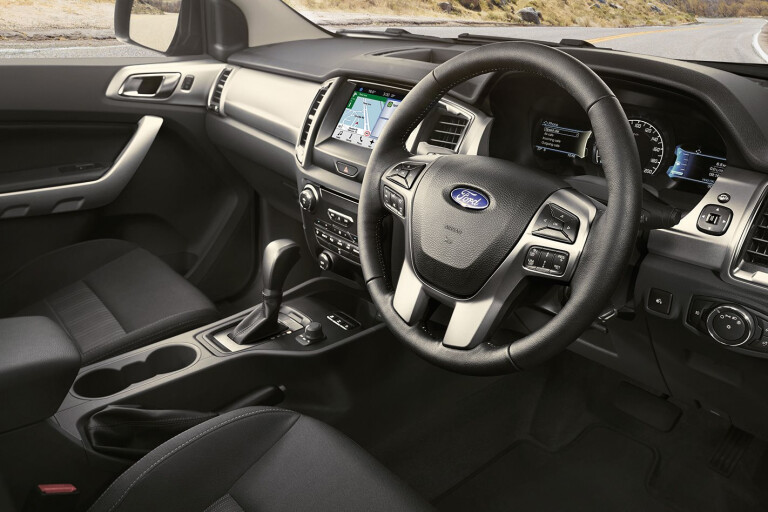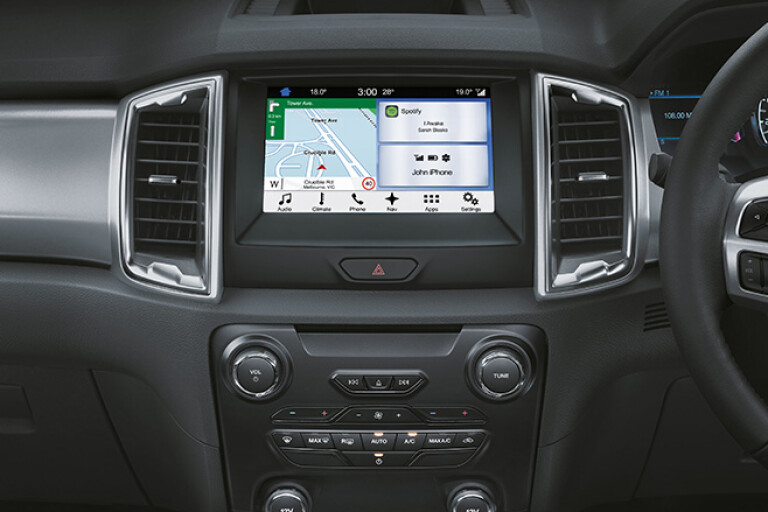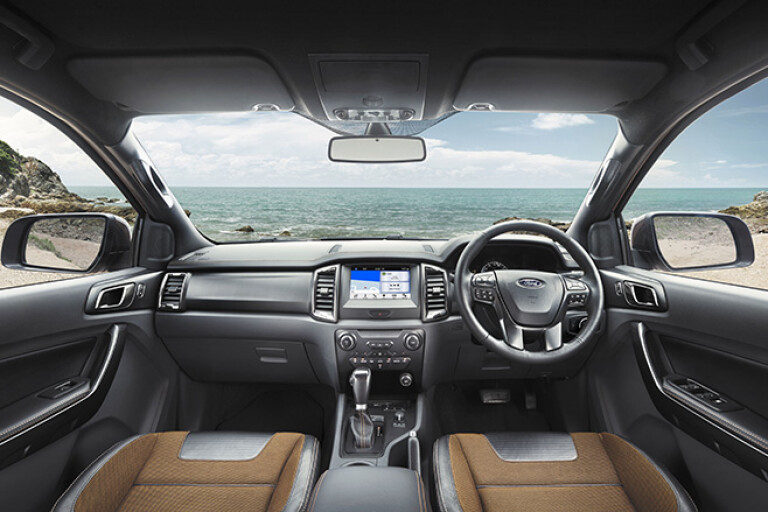
The Ford Ranger has been given a swathe of updates for 2017 as the Australian-developed ute eyes off Toyota’s Hilux’s position as the country’s most popular vehicle in the competitive pick-up segment.
More technology as standard fitment is the name of Ford’s Hilux-toppling game, starting with a rear-view camera and reverse-parking sensors standard across all models in the 2017 Ranger line-up – except the XL Plus. Front parking sensors for the XLT and an optional automatic transmission for the 4X4 XL Super Cab Chassis 3.2L are also among the updates, while the range’s two most popular models; the XLT and the Wildtrak, will now come adorned with Ford’s new communication and entertainment system: Sync 3.

Sync 3 sees improved voice recognition over the outgoing Sync 2 system. It features more intuitive touchscreen functionality; better graphics; improved customisation and also includes Apple’s CarPlay and Android’s AutoTM integration.
As well as the new comms system, the top-of-the-line Wildtrak model also gains a host of additional electronic driver aids from 2017 onwards. Adaptive cruise control, automatic high beam, Lane Keep Assist and Lane Departure Warning, as well as the firm’s Driver Impairment Warning, will all come fitted as standard.
For the 12-month period to 31 December 2015, the Ranger trailed the Toyota Hilux by almost 6000 units in terms of new car sales, but 38 percent growth (to date) has seen the Ranger pull within 310 units for the first six months of 2016, which the Australian subsidiary is attributing to a shift in the Australian consumer’s behaviours and appreciation scales.

“Customers have fallen in love with the Ranger’s technology features and capabilities and they really appreciate the fact that it’s Australian designed,” Ford’s Jasmine Mobarek told WhichCar “And there’s also been a shift in consumer behaviour in that a vehicle like the Ranger is no longer just a work horse, it’s a different lifestyle.”
The firm hopes these latest upgrades will be enough to tip the scales in favour of Ford for the first time since its 2011 release which will mean far more to it than bragging rights over the long-standing Toyota model.
“Hilux hasn’t really had any competition until now,” Mobarek continued. “But it’s less about us toppling the Hilux and more about the satisfaction that comes with Australian consumers choosing what we believe to be the best product.”
COMMENTS